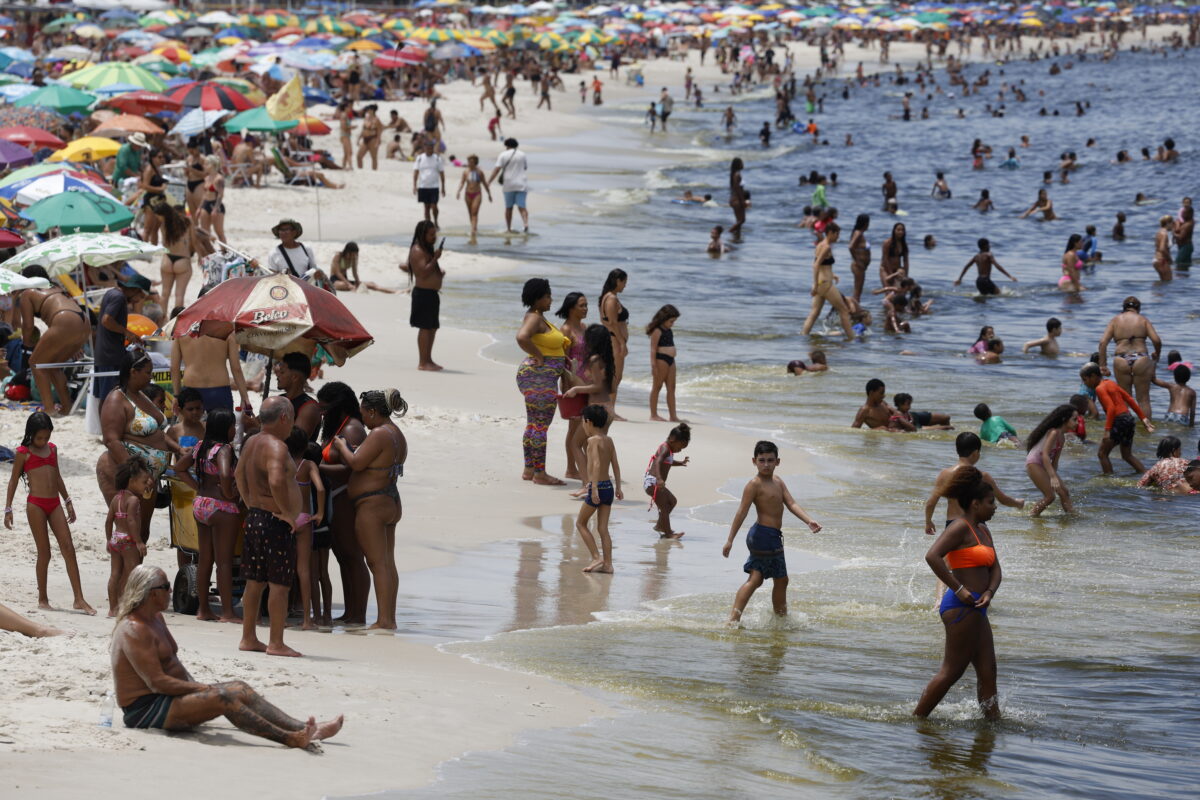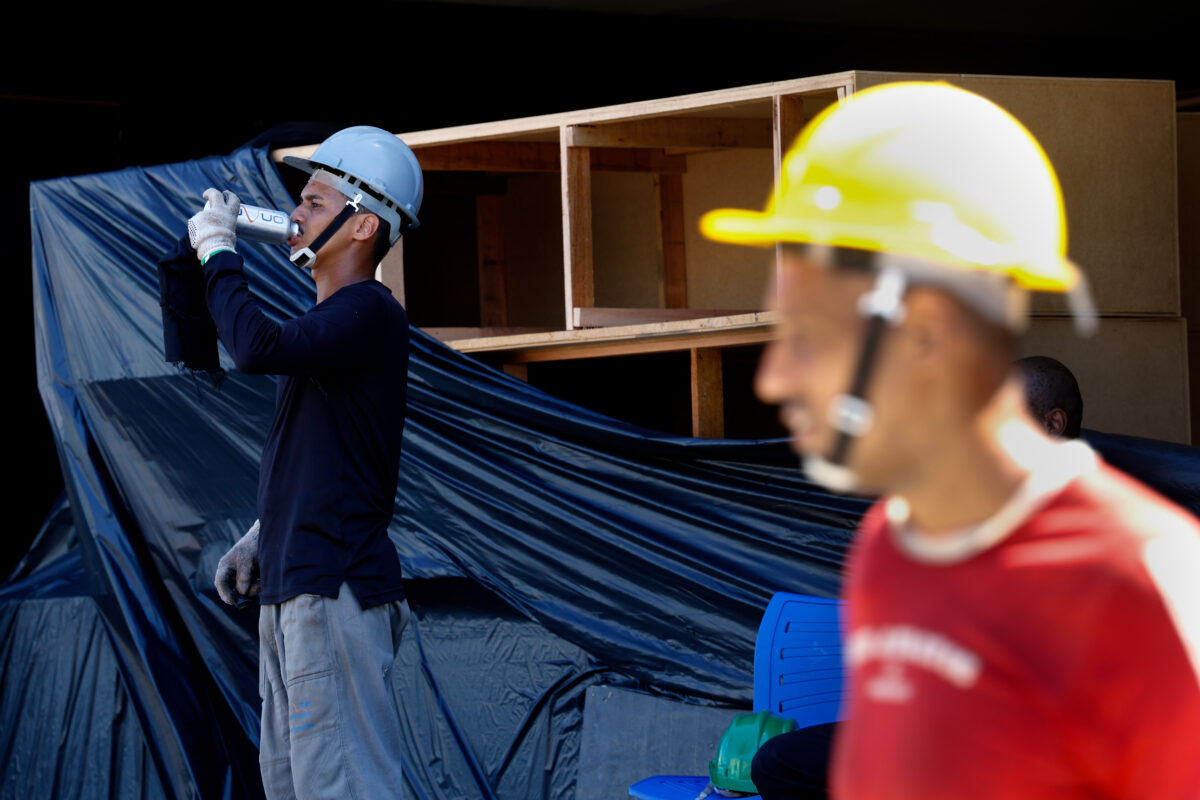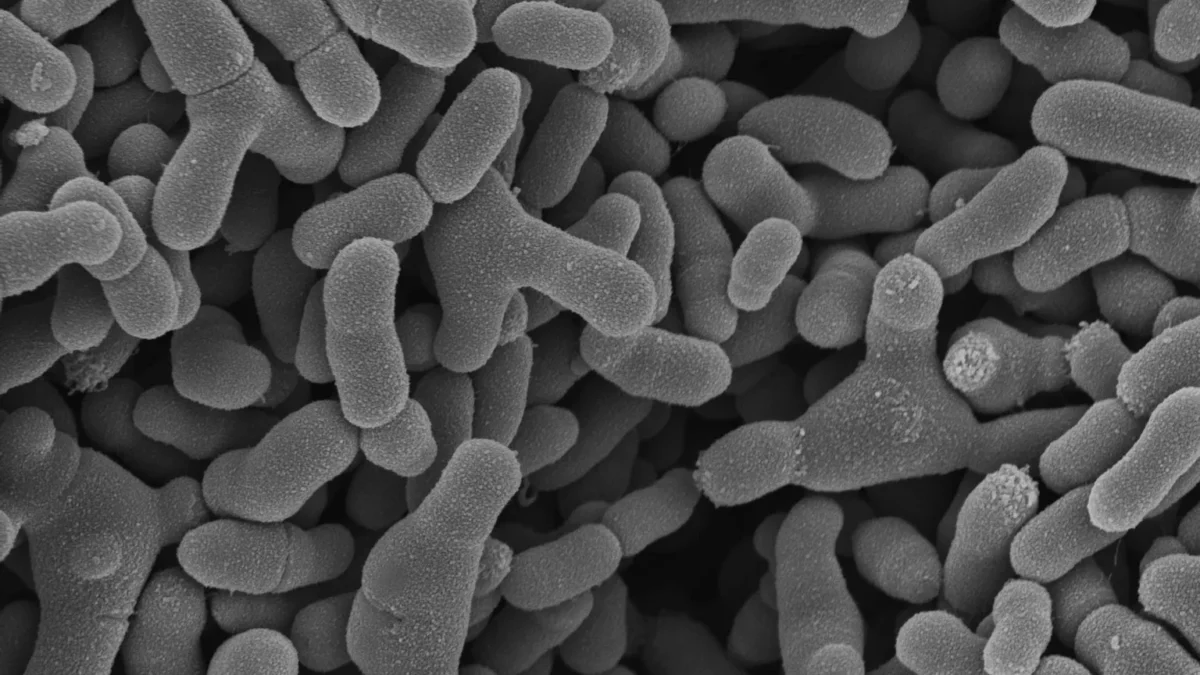 #News
#News
Extreme heat: Researchers explain the impact of high temperatures on human health
Heat waves increase the risk of hospitalization and death, with an increase of up to 50% in cases after periods of extreme temperatures
 High temperatures challenge the body’s ability to cool itself, increasing the risk of dehydration, cardiovascular overload, and respiratory complications
High temperatures challenge the body’s ability to cool itself, increasing the risk of dehydration, cardiovascular overload, and respiratory complications
Sweating, dizziness, shortness of breath. These symptoms are more than just an inconvenience; excessive heat poses a significant risk to life, drawing the attention of researchers studying the relationship between climate and health. When thermoregulation mechanisms become overwhelmed, a series of physiological responses can lead to severe complications.
The human body maintains an internal temperature of around 98.6 °F through a delicate balance regulated by the hypothalamus, located at the base of the brain.
“However, extreme temperatures can destabilize this system, triggering a cascade of health issues, particularly among the elderly, children, and individuals with chronic conditions,” explains physician and meteorologist Micheline Coelho, a collaborating researcher at the Laboratory of Environmental and Experimental Pathology (LAPAE) at the University of São Paulo’s School of Medicine (FM-USP) and Monash University in Australia.
One of the primary mechanisms for adapting to heat is the dilation of blood vessels, which can lead to fluctuations in blood pressure and increase the risk of cardiovascular events such as ischemia, cardiac dysrhythmias, and stroke.
According to an article published in The New England Journal of Medicine, these conditions are among the primary health issues associated with heat waves.
Accelerated breathing, a natural response to dissipate heat, combined with dry air, can also damage the airways, exacerbating asthma and chronic obstructive pulmonary disease (COPD).
Furthermore, dehydration can worsen the condition of patients with kidney problems.
“The combination of intense heat and factors such as high air humidity impedes the body’s ability to cool down through perspiration,” explains João Henrique Morais from the Epidemiological Intelligence Center of the Rio de Janeiro Municipal Health Department.
“This challenge is particularly pronounced for individuals with comorbidities that already affect thermoregulation. As a result, body temperature and cardiac demand increase, placing additional strain on the circulatory system and elevating the risk of more severe outcomes,” Morais adds.
Studies and evidence
To gain a deeper understanding of the relationship between heat and mortality, Morais—who is also a PhD student in the Public Health Epidemiology Program at the Oswaldo Cruz Foundation (FIOCRUZ)—analyzed 466,000 records collected in Rio de Janeiro.
His study, published as a preprint on the MedRxiv platform, found that hypertensive diseases, diabetes, and Alzheimer’s disease were among the conditions most affected by extreme heat.

“Body thermoregulation can also be influenced by the use of antipsychotics, particularly in individuals with neurological disorders,” explains Morais.
The study also introduced a new metric: the Heat Exposure Area (HEA), which complements existing indices such as the average daily temperature and the heat index.
Statistical models applied in the study indicated that mortality from certain diseases can increase by up to 50% when the temperature exceeds 40 °C for six hours, or 44 °C for three hours.
Extended effects of extreme heat
High temperatures affect various bodily functions and can even impact mental health. An article published in 2024 in The New England Journal of Medicine highlighted the relationship between heat waves and neurological disorders such as anxiety, depression, and an increased suicide rate.
Additionally, studies suggest that extreme heat may be linked to higher rates of premature births and homicides.
According to researchers at Columbia University’s School of Public Health in the United States, the risk of heat-related health issues varies based on individual susceptibility, exposure duration, and sociocultural factors.
Among the most vulnerable groups are:
- Elderly individuals;
- Children and babies;
- Pregnant women;
- People with preexisting conditions (such as obesity and heart diseases);
- Outdoor workers and athletes.

Another study, published this year, analyzed data from 1,816 Brazilian cities between 2000 and 2019, indicating that extreme heat also increases the risk of hospitalization for noninfectious intestinal diseases.
“The high temperatures promote the proliferation of microorganisms, which can be exacerbated by poor sanitary conditions,” explains Micheline Coelho, coauthor of this research.
She also notes that heat affects homeostasis, altering the entire enzymatic process involved in digestion. “Vomiting can occur because the digestive system is not in enzymatic balance,” she explains.
The need to adapt
Coelho, who is part of the international Multi-Country Multi-City network, emphasizes that the impact of heat waves is more severe in middle- and low-income countries, where infrastructure and health services are less equipped to manage extreme weather events.
“In poorer or developing countries, the impact will be greater, and more people will die. We need to adapt to the changes,” warns Coelho.
The researcher points out that some solutions to reduce health impacts are simple and accessible.
“Measures to prevent certain health-related issues are often quite simple. You don’t always need large-scale engineering projects,” says Coelho, a researcher at the University of São Paulo (USP).
“Often, it’s enough to adapt what already exists,” she emphasizes. As examples, she lists precautions that can be implemented in various locations.
“It’s essential to ensure that hospitals have properly maintained air conditioning systems.
Schools and workplaces must also have the necessary infrastructure to withstand intense heat waves in the coming years.”
*
This article may be republished online under the CC-BY-NC-ND Creative Commons license.
The text must not be edited and the author(s) and source (Science Arena) must be credited.
News
 #News
#News
 #News
#News
 #News
#News
